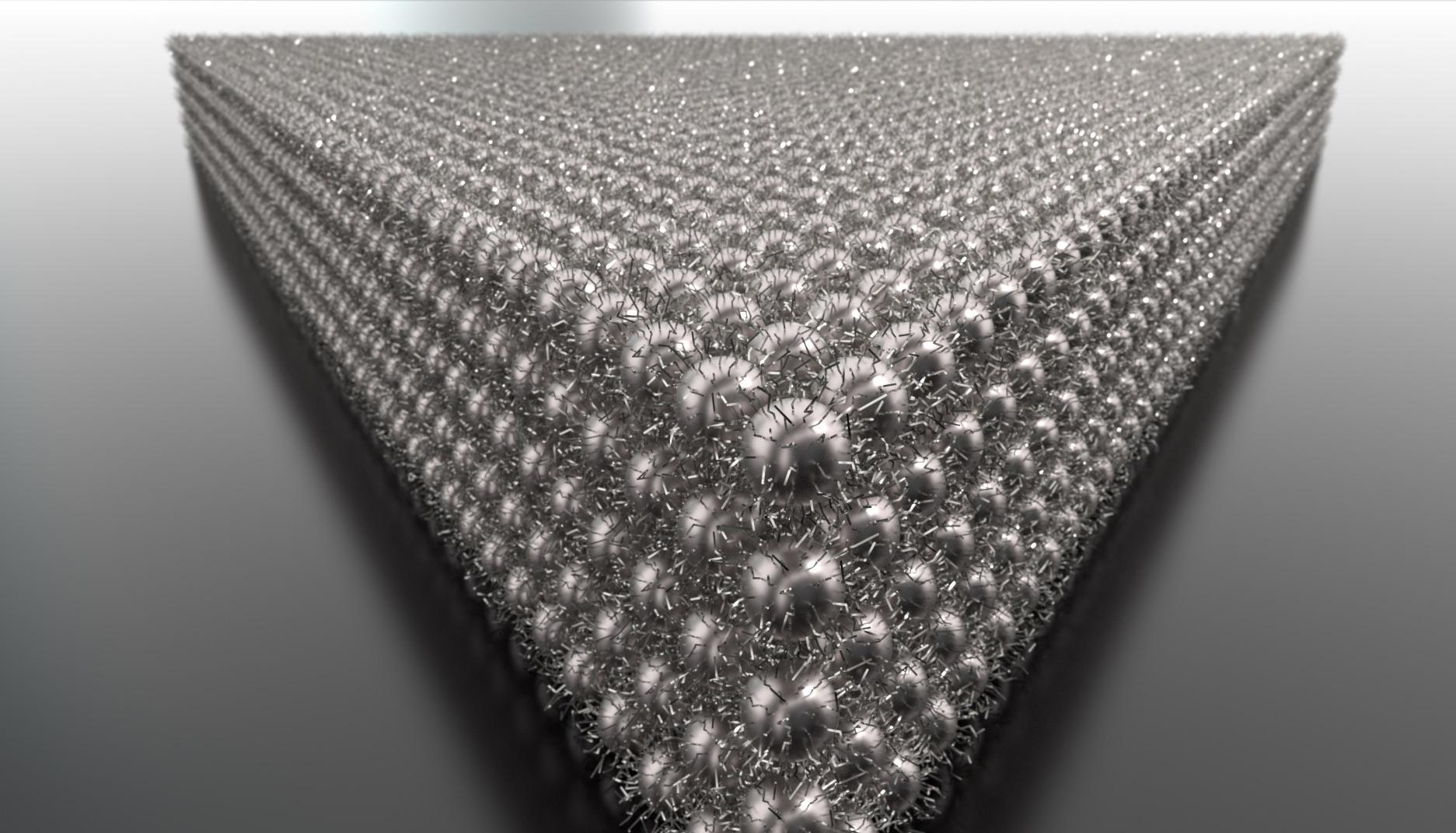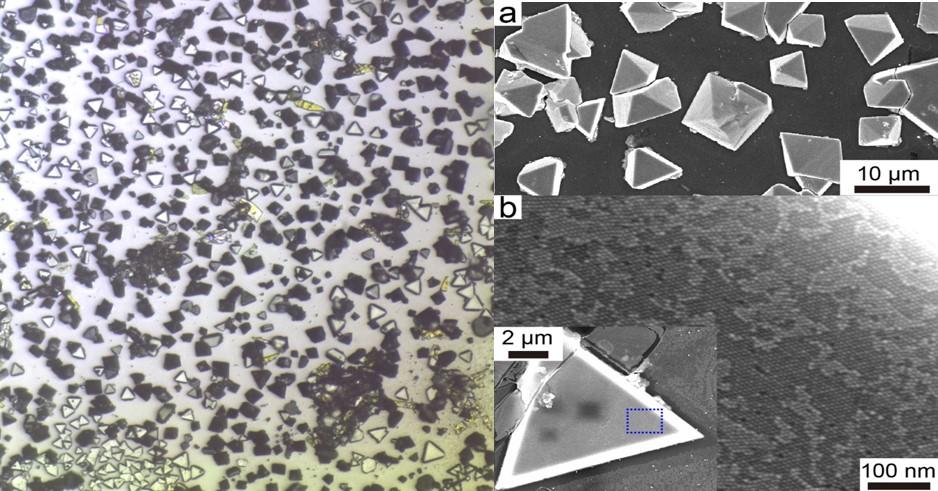Ordered nanocrystal superlattices are emerging materials that have widespread applications in photodetectors, light emitting devices, solid state lasers, solar cells, thermoelectric devices, field effect transistors, and memory devices. The degree of order in the superlattices is crucial for their applications. A process that can produce large scale ordered nanocrystal superlattices is therefore greatly desired. Currently, nanocrystal superlattices are fabricated with solvent evaporation methods, such as dip coating, spinning coating, spray coating, drop casting, ink jet printing. These processes trade off fabrication speed and crystalline quality of the films; fast fabrication results in disorder or poorly ordered superlattices, whereas a highly ordered superlattice often requires a fairly long fabrication time. For example, it would take a few days or weeks for solvent evaporation methods to generate ordered 3-dimensional superlattices. In addition, the lattice constant of the superlattice made by solvent evaporation methods is not a tunable parameter since it is dictated by the size of the nanocrystal core and length of the capping ligands.
The novel LLNL technique uses electric fields to drive and control assembly. In the literature such methods have heretofore only formed disordered ensembles. This innovative method increases local nanocrystal concentration, initiating nucleation and growth into ordered superlattices. Nanocrystals remain solvated and mobile throughout the process, allowing fast fabrication of ordered superlattices. Nanocrystals covered by this approach include, but are not limited to, metal nanocrystals, semiconducting nanocrystals (quantum dots), and insulating nanocrystals, or a combination of those. Solvents used in this approach include, but are not limited to, hexane(s), toluene, and chloroform. This process can be easily scaled to cubic meter solution volume and square meter surface area.
Yixuan Yu, Dian Yu, and Christine A. Orme, Nano Letters 2017 17 (6), 3862-3869 (https://doi.org/10.1021/acs.nanolett.7b01323)
This innovative nanocrystal superlattice fabrication method is faster and offers more tunability than current solvent evaporation or destabilization methods, and can produce superlattices with morphologies beyond colloidal crystals in other material systems, enabling fabrication of nanocrystal devices with complex structures. Specifically, the LLNL method:
- Produces highly ordered colloidal crystals in much shorter times than current methods. For example, has created 2 micron thick films with domain sizes greater than 25 microns.
- Creates denser materials than traditional field driven methods, including electrophoretic deposition (EPD). For example, can create ordered nanoparticle ensembles with a face centered cubic structure that has ~74% of packing density, which is 9% denser than the disordered structure (~65%) created by previous EPD methods.
- Offers means to tune the structure of nanoparticle ensembles, including the degree of order, lattice constant, degree of preferential orientation, and morphology on patterned surfaces, which is crucial for the fabrication of devices with complex structures.
- Allows one to change the capping ligands on the surfaces of nanoparticles at the same time as they are being assembled/deposited.
- Is scalable, and about 10-100 times faster than solvent evaporation methods that produce the similar degree of order.
- Suppresses the solvent evaporation induced uniaxial contraction towards substrates.
- Uses nanoparticle solutions at very low concentrations (<1 wt%).
- Reusable solvent, leading to substantially less waste, and
- Is reversible, which means that turning off the electrical field causes the nanoparticle deposits to dissolve, leading to less waste of nanocrystals.
- Photodetectors
- Light emitting devices
- Solid state lasers
- Solar cells
- Thermoelectric devices
- Field effect transistors
- Memory devices
LLNL has patent(s) on this invention.
U.S. Patent No. 11305252 System, Method, And Apparatus Relating To Colloidosomes published 4/19/2022



